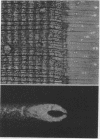Abstract
Direct determinations and indirect calculations of phloem turgor pressure were compared in white ash (Fraxinus americana L.). Direct measurements of trunk phloem turgor were made using a modified Hammel-type phloem needle connected to a pressure transducer. Turgor at the site of the direct measurements was calculated from the osmotic potential of the phloem sap and from the water potential of the xylem. It was assumed that the water potentials of the phloem and xylem were close to equilibrium at any one trunk location, at least under certain conditions. The water potential of the xylem was determined from the osmotic potential of xylem sap and from the xylem tension of previously bagged leaves, measured with a pressure chamber. The xylem tension of bagged leaves on a branch adjacent to the site of the direct measurements was considered equivalent to the xylem tension of the trunk at that point. While both the direct and indirect measurements of phloem turgor showed clear diurnal changes, the directly measured pressures were consistently lower than the calculated values. It is not clear at present whether the discrepancy between the two values lies primarily in the calculated or in the measured pressures, and thus, the results from both methods as described here must be regarded as estimates of true phloem turgor.
Full text
PDF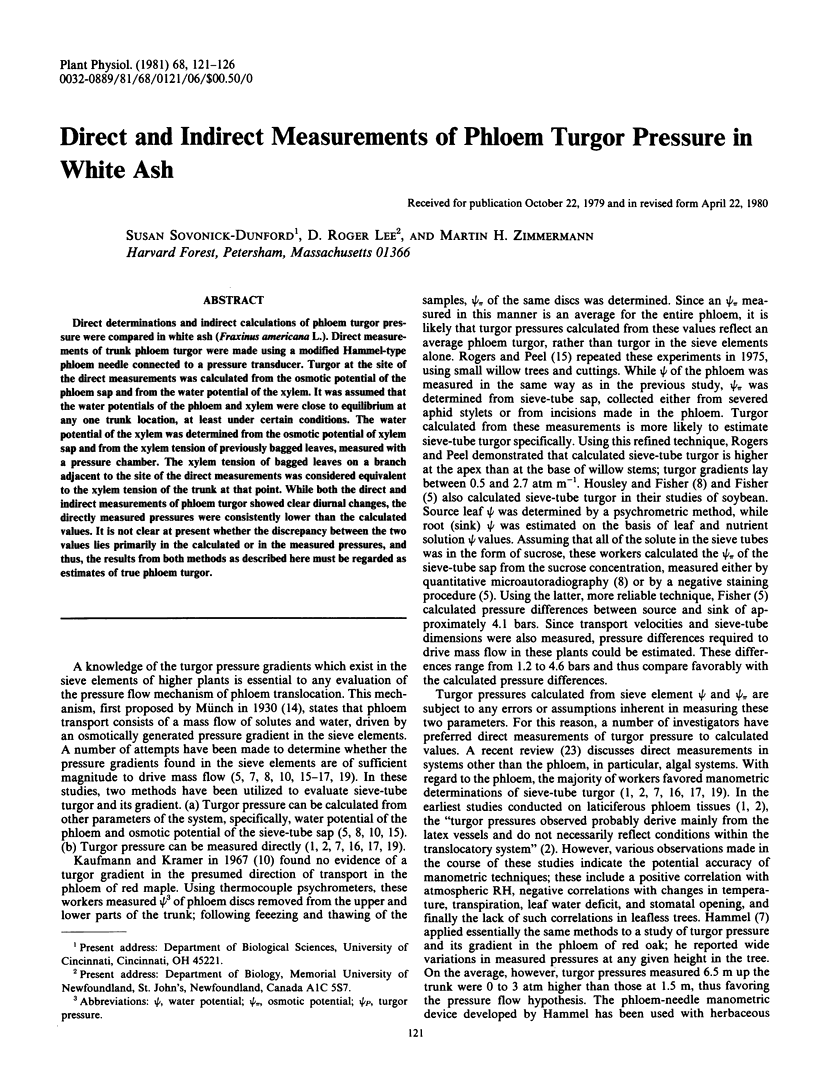
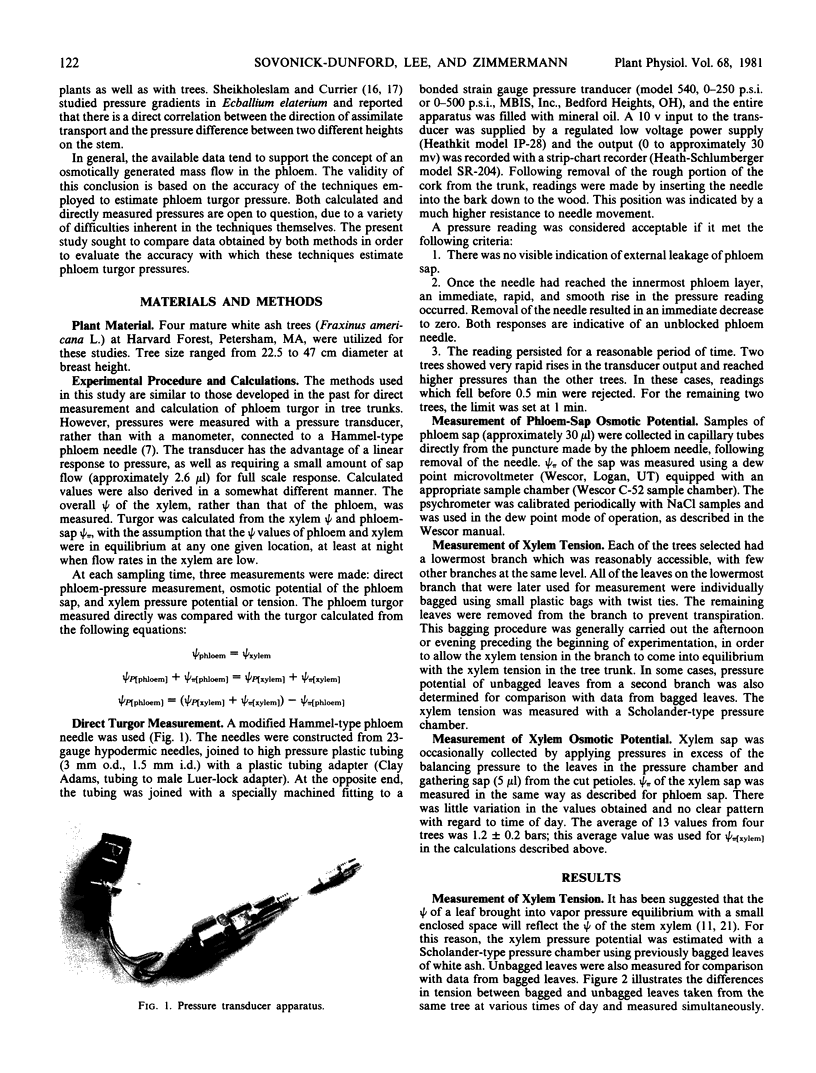
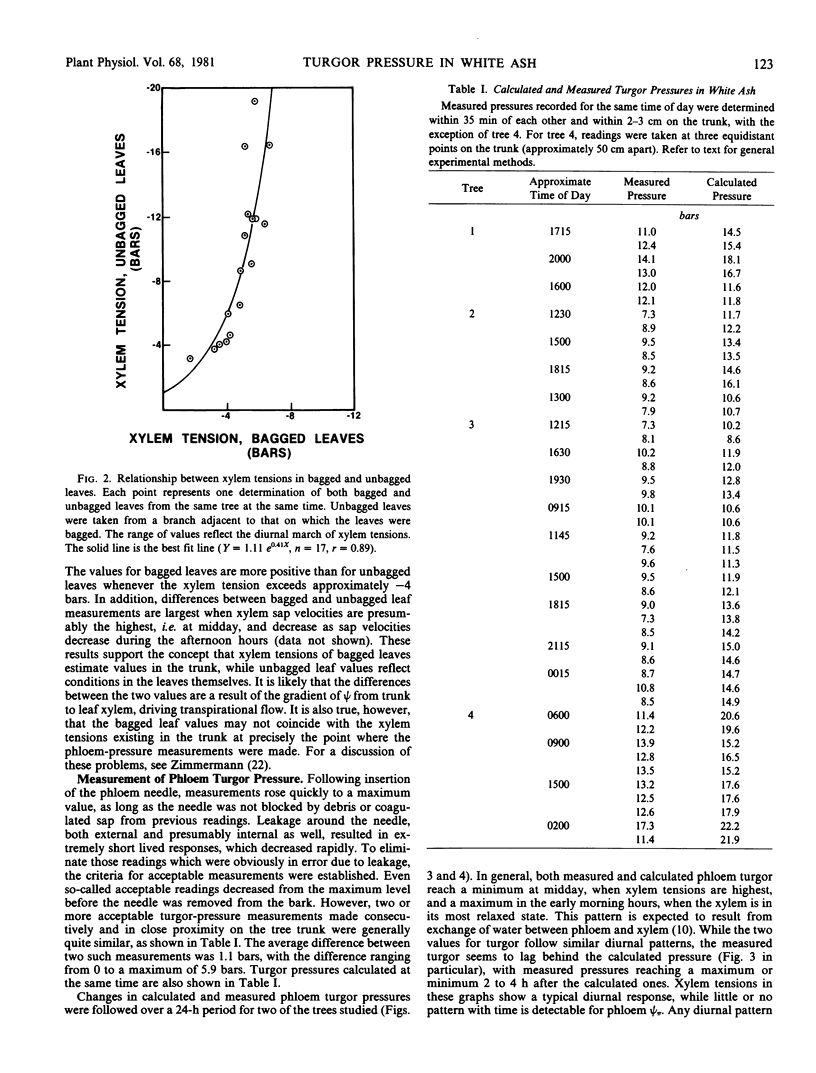
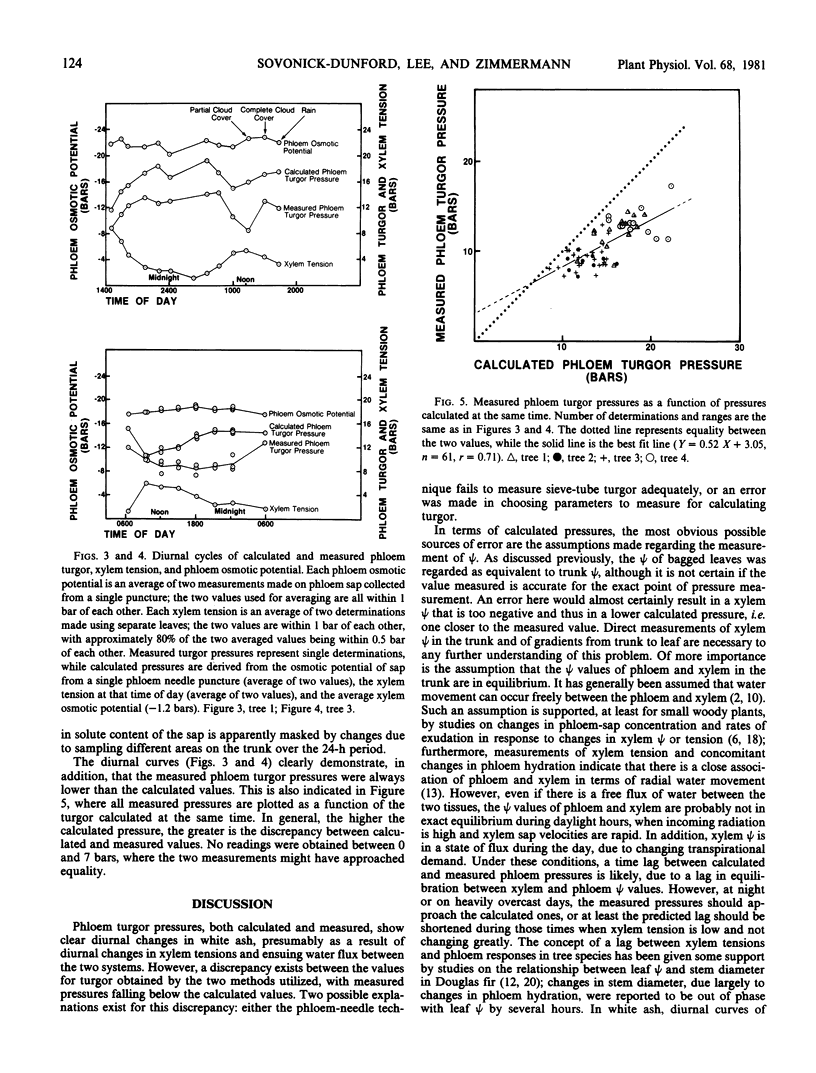
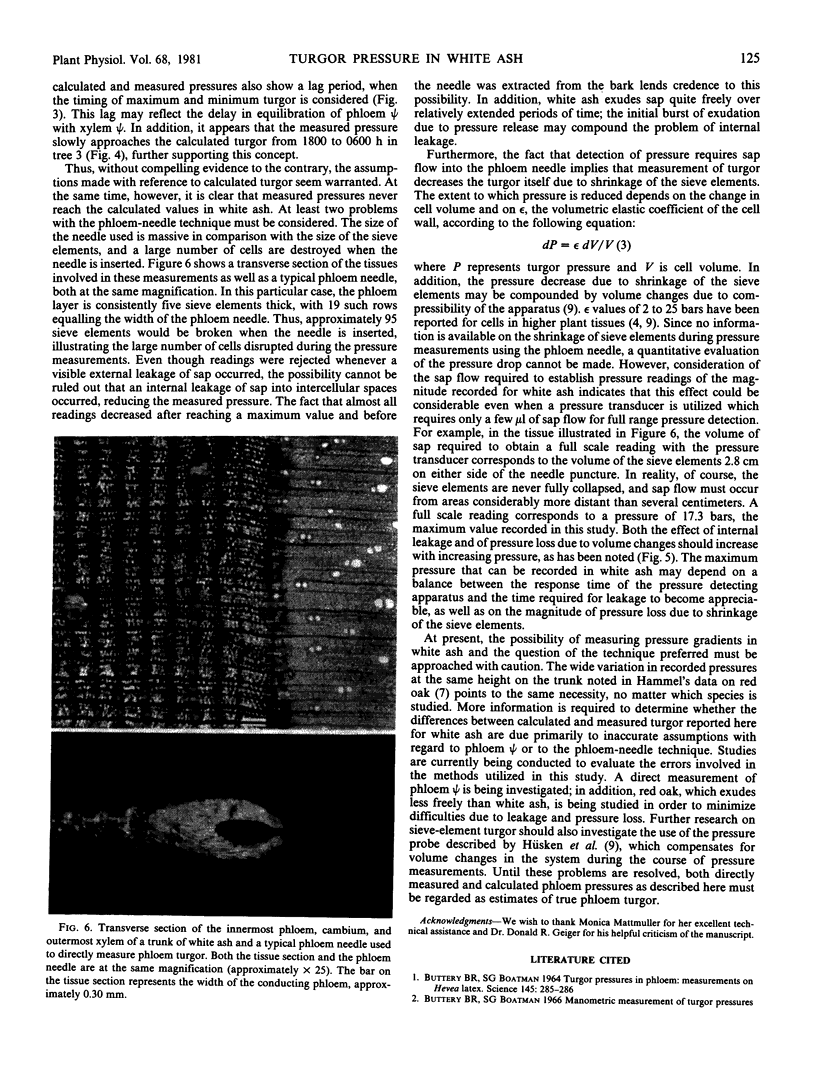
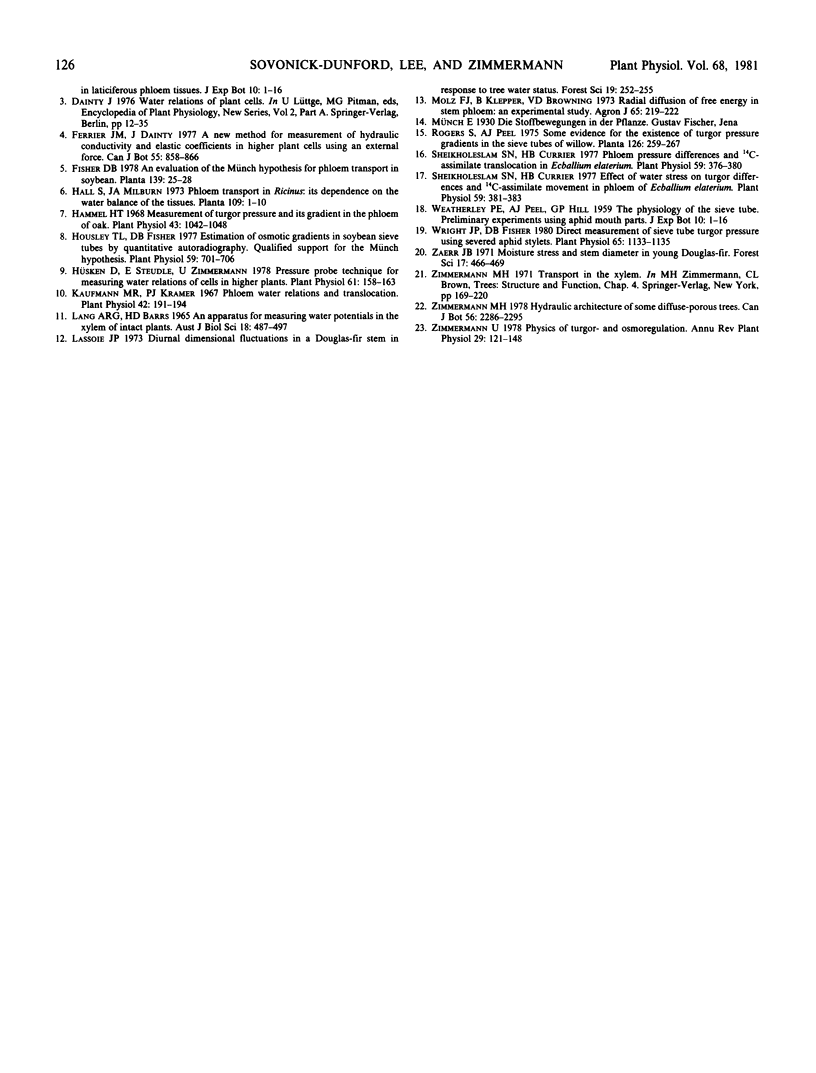
Images in this article
Selected References
These references are in PubMed. This may not be the complete list of references from this article.
- Buttery B. R., Boatman S. G. Turgor Pressures in Phloem: Measurements on Hevea Latex. Science. 1964 Jul 17;145(3629):285–286. doi: 10.1126/science.145.3629.285. [DOI] [PubMed] [Google Scholar]
- Hammel H. T. Measurement of turgor pressure and its gradient in the Phloem of oak. Plant Physiol. 1968 Jul;43(7):1042–1048. doi: 10.1104/pp.43.7.1042. [DOI] [PMC free article] [PubMed] [Google Scholar]
- Housley T. L., Fisher D. B. Estimation of Osmotic Gradients in Soybean Sieve Tubes by Quantitative Autoradiography: Qualified Support for the MUnch Hypothesis. Plant Physiol. 1977 Apr;59(4):701–706. doi: 10.1104/pp.59.4.701. [DOI] [PMC free article] [PubMed] [Google Scholar]
- Hüsken D., Steudle E., Zimmermann U. Pressure probe technique for measuring water relations of cells in higher plants. Plant Physiol. 1978 Feb;61(2):158–163. doi: 10.1104/pp.61.2.158. [DOI] [PMC free article] [PubMed] [Google Scholar]
- Kaufmann M. R., Kramer P. J. Phloem water relations and translocation. Plant Physiol. 1967 Feb;42(2):191–194. doi: 10.1104/pp.42.2.191. [DOI] [PMC free article] [PubMed] [Google Scholar]
- Sheikholeslam S. N., Currier H. B. Effect of Water Stress on Turgor Differences and C-Assimilate Movement in Phloem of Ecballium elaterium. Plant Physiol. 1977 Mar;59(3):381–383. doi: 10.1104/pp.59.3.381. [DOI] [PMC free article] [PubMed] [Google Scholar]
- Sheikholeslam S. N., Currier H. B. Phloem Pressure Differences and C-Assimilate Translocation in Ecballium elaterium. Plant Physiol. 1977 Mar;59(3):376–380. doi: 10.1104/pp.59.3.376. [DOI] [PMC free article] [PubMed] [Google Scholar]
- Wright J. P., Fisher D. B. Direct measurement of sieve tube turgor pressure using severed aphid stylets. Plant Physiol. 1980 Jun;65(6):1133–1135. doi: 10.1104/pp.65.6.1133. [DOI] [PMC free article] [PubMed] [Google Scholar]




